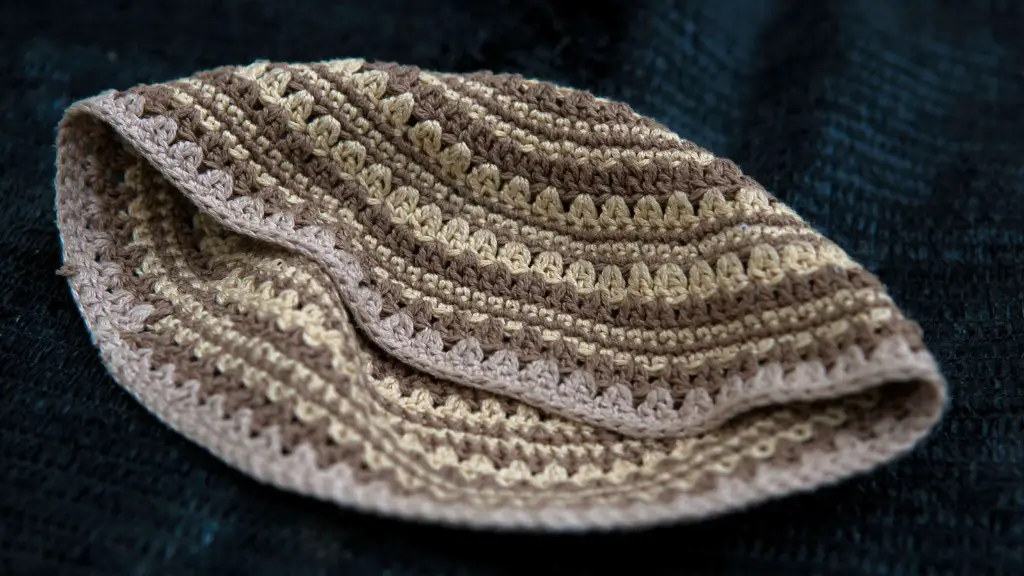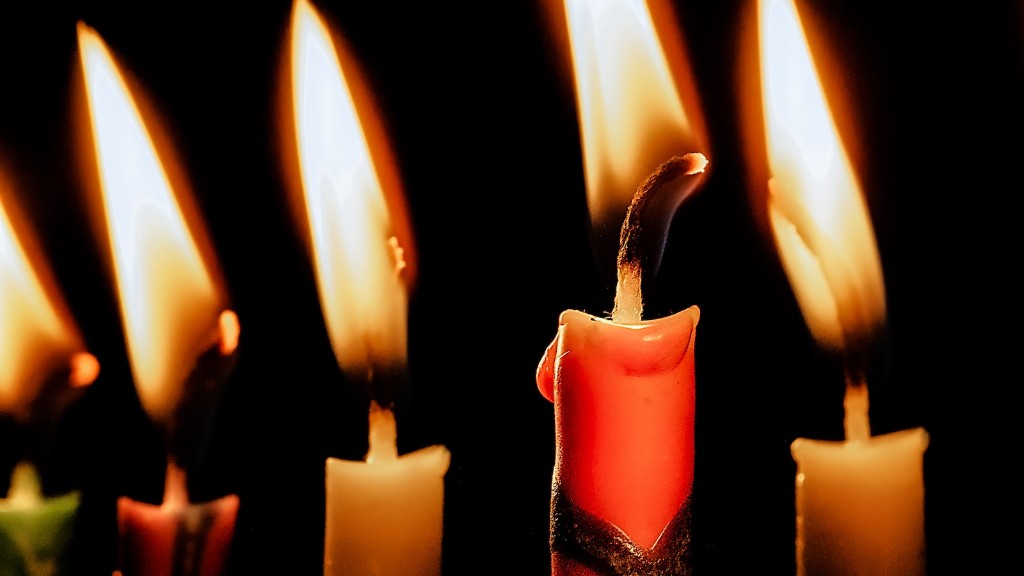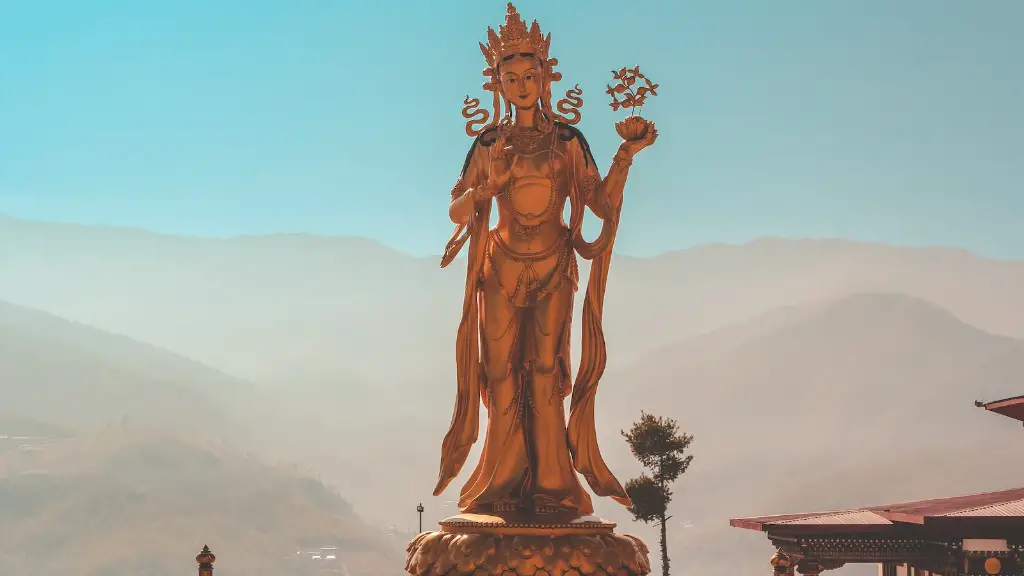What Is Brahma In Hinduism
Brahma is one of the most important gods in Hinduism, one of the main religions of India. He is one of the Trimurti, or triple gods, making up the Hindu trinity, along with Vishnu and Shiva. He is often referred to as the Creator and presides over the process of creation.
The Rig Veda, an ancient Hindu religious text, is in agreement that Brahma is responsible for creating the universe. The text states that he was born from a golden egg that was floating in the cosmic waters. He then split this egg in two, from which the sky and the earth were formed. Brahma then created the four Vedas, the most ancient Hindu holy scriptures.
The cosmos created by Brahma is not a permanent one; it exists in cycles known as kalpas, lasting 8.64 billion years. The end of a kalpa is followed by another cycle, in which the process of creation begins again; Brahma presides over and oversees this process. In some manifestations, Brahma also predicts the end of the world, and is believed to be the guardian of Dharma, the eternal law of the universe.
Brahma is usually depicted in art as if in an assembly of gods. He is sometimes depicted holding a pot of the nectar of immortality, to indicate his ability to sustain life. He is sometimes depicted with four or four-and-a-half faces, representing his all-seeing nature, and with four arms, each holding different aspects of the universe.
Though he is rarely worshipped as a main deity, Hindus still respect and acknowledge him as important. Devotees of the other gods of the trinity, Vishnu and Shiva, often perform puja, holy rituals, to Brahma as well, recognizing him as the source and sustainer of the cosmic order. Those who practice Vedic astrology recognize deep connections between the various planets and Brahma and his creative energy.
Attributes Of Brahma
In Hinduism, Brahma is viewed as the one who creates and maintains. He is a perfect combination of both male and female forces, being a god with four arms but possessing both masculine and feminine characteristics. He’s also associated with fair judgment and is thought to bring balance and harmony between the three worlds of Hinduism: the physical, the spiritual, and the astral realm.
Brahma has many different epithets, names, stories and roles. He’s sometimes referred to as Prajapati, or ‘Lord of Creation.’ He is also sometimes called Hiranyagarbha, or ‘Golden Embryo,’ referring to the golden egg from which he emerged. Brahma is also associated with Saraswati, the goddess of learning, symbolizing the importance of knowledge, creativity and skill.
Brahma is believed to have created the four Vedas, the holy books of the Hindu faith. These books contain knowledge of the universe, its creation, and the spiritual truth that underlies it all. Brahma is said to have composed all of the four Vedas in the early creation process. He is also the guardian of Dharma, the eternal law of the universe, embodying the concept of justice and balance.
Brahma In Temples
Unlike other Hindu gods, Brahma is not widely worshipped in temples. This is because of an ancient legend about his lack of self-control. The creator god grew desperate for a wife, so he created one for himself using a fire ritual. His wife, the goddess Satarupa, was so upset by this that she cursed him never to have a temple of his own. Despite having temples dedicated to other Hindu deities, none are dedicated to Brahma.
Despite the lack of temples, the rituals dedicated to Brahma are still important to Hindus. He is believed to possess immense powers, capable of inspiring creativity, prosperity and harmony. Devotees perform puja rituals on Tuesdays to honor and invoke his blessings. Hindus also commonly chant the mantra “Om Brahmani Namah”, which invokes the protection and blessing of Brahma. It is believed that by honoring and recognizing him, one can be blessed with good fortune and receive his grace.
Symbolism Of Brahma
In Hindu mythology, Brahma is said to represent several symbolic concepts. He embodies the creative power of the universe, and many of his actions also symbolize important spiritual ideas. One such symbol is the lotus flower, which he supposedly sat on when he created the world. In Hinduism, the lotus symbolizes the world, and its many symbols serve as reminders that the world is full of beauty and divine potential.
Brahma is also sometimes shown holding a bow and arrow, which represent his ability to shoot down evil. The weapon suggests that he is the ultimate defender of justice, willing to fight evil and injustice with his divine weapons. In much the same way, Brahma’s other weapon, a scepter with a lotus blossom, represents his power to destroy evil and bring peace, harmony, and prosperity to the world.
Relationship With Other Gods
As the creator of the universe, Brahma’s relationship with other gods is complex. He is one third of the Hindu trinity, alongside Vishnu and Shiva. Vishnu is seen as the preserver, the one who brings order and stability to the world, while Shiva is seen as the destroyer and transformer, the one who brings about change. In some senses, Brahma acts as a bridge between the two, providing unity and balance.
Brahma is also closely related to other Hindu gods, such as Ganesha and Lakshmi. Ganesha is the god of wisdom and prosperity, while Lakshmi is the goddess of wealth and fertility. Both are seen as manifestations of Brahma’s power and are often invoked during rituals dedicated to him. In some senses, Brahma also represents the source of all life and energy, being the ultimate source of creation in Hindu mythology.
Worship Of Brahma
Though Brahma is not widely worshipped in temples, he is still revered by Hindus and is considered an essential part of their faith. He is invoked in various rituals, from the daily puja of other Hindu gods to the seasonal observances of festivals such as Diwali. Devotees also meditate on him, recite his mantras, and participate in rituals dedicated to honoring him.
Though Brahma is an important part of Hinduism, he is not as widely known as some of the other gods, such as Vishnu or Shiva. But his role in the Hindu faith is an important one. He embodies the creative power of the universe, the potential for change and transformation, and the importance of knowledge, justice, and harmony.
The Impact Of Brahma
Brahma is an important symbol in Hindu mythology, embodying the spirit of creation and the power of knowledge. He is seen as the source of all life, and his role in the Hindu faith is to bring peace and harmony to the world. His symbolic representations, from the lotus flower to the bow and arrow, serve as reminders of his creative power, as well as his ability to defeat evil and bring justice to the world.
The rituals dedicated to Brahma are a way for Hindus to remember and honor their god. By recognizing and respecting him, Hindus hope to invoke his power and wisdom in their lives. In this way, the worship of Brahma has an immense impact on Hinduism, reminding devotees of the importance of justice, wisdom, and the potential for good in the world.
Symbolic Meanings
Brahma is a complex figure in Hindu mythology, representing many symbolic ideas. His four arms and four faces embody his omniscient nature and his ability to look into all aspects of the universe. He is the source from which other gods and goddesses come, and many spiritual symbols are attributed to him, from the lotus flower to the bow and arrow.
By invoking his power, Hindus hope to bring wisdom and prosperity to their lives. His importance in Hinduism arises from his role as the source of all life, as well as his ability to destroy evil and bring justice to the world. In this way, the symbolic meanings of Brahma serve as reminders to followers of the potential for good, and of the importance of respecting what is sacred.
The Mythology Of Brahma
In Hindu mythology, Brahma is said to have created the universe with a single act of creation. He split the cosmic egg and formed the sky, the earth, and all of the living beings in between. He also composed the four Vedas, the holy books of Hinduism, containing the knowledge of the universe and the spiritual truths that lie beneath it.
Brahma is also depicted in art as an assembly of gods, and is sometimes shown with four or four-and-a-half faces, representing his all-seeing nature, and four arms, each holding different aspects of the universe. He is closely associated with other Hindu deities, such as the goddess of learning, Saraswati, and is believed to possess immense powers, capable of inspiring creativity, prosperity and harmony. He is also the guardian of Dharma, the eternal law of the universe.
Conclusion
In Hinduism, Brahma is one of the most important gods, a part of the trinity, along with Shiva and Vishnu. He is often referred to as the Creator and presides over the process of creation. He is closely related to other Hindu gods, such as Ganesha and Lakshmi, and is often invoked during rituals dedicated to him. His symbolic representations, from the lotus flower to the bow and arrow, serve as important reminders of his creative power and of the potential for good in the world. In this way, Brahma is an important part of Hinduism, reminding devotees of the importance of justice, wisdom, and the potential for harmony in the universe.


